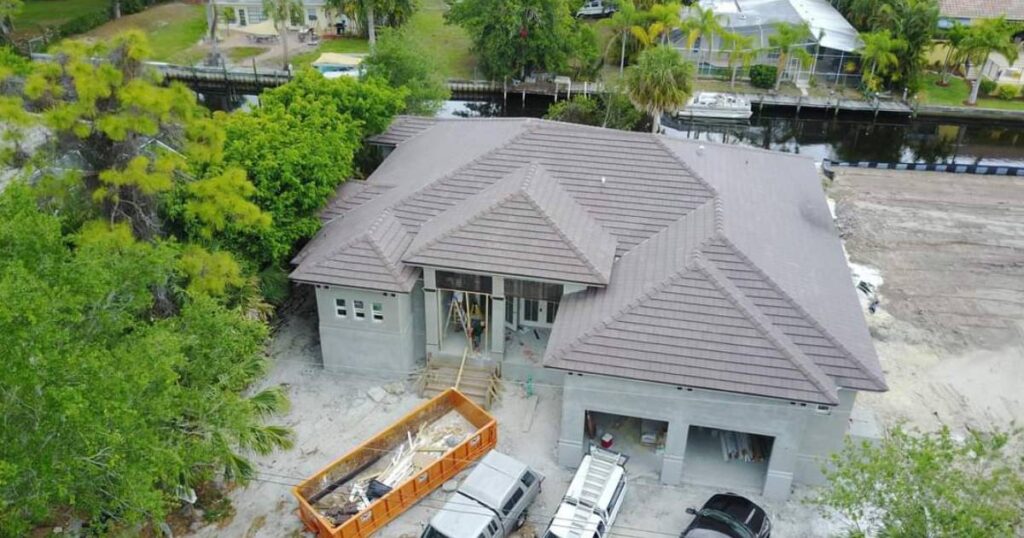Roof leaks are a homeowner’s nightmare, often appearing without warning and leading to serious damage if not addressed promptly. To prevent costly repairs and safeguard your home, it’s crucial to act swiftly with proper roof leak repair techniques. This guide will help you quickly identify and fix roof leaks, ensuring your home remains safe and dry.

Understanding the Causes of Roof Leaks
Before you can effectively tackle roof leak repair, it’s crucial to understand what causes roof leaks. Several factors can contribute to roof leaks, including:
- Aging Roof Materials: Over time, roofing materials deteriorate, leading to potential roof leaks. Regular maintenance can delay the need for roof leak repair.
- Damaged or Missing Shingles: High winds or storms can damage or dislodge shingles, exposing your roof to roof leaks. Immediate roof leak repair is necessary to prevent further issues.
- Clogged Gutters: When gutters are clogged, water backs up onto the roof, causing roof leaks. Cleaning gutters regularly can minimize the need for roof leak repair.
- Improperly Sealed Roof Valleys: Valleys where two roof planes meet are vulnerable to roof leaks if not sealed properly, necessitating prompt roof leak repair.
- Damaged Flashing: Flashing seals around chimneys, vents, and skylights can fail, leading to roof leaks that require immediate roof leak repair.
- Ice Dams: In colder climates, ice dams can form, trapping water on the roof and leading to roof leaks. Addressing these quickly with roof leak repair can prevent extensive damage.
- Cracked or Worn Seals Around Roof Penetrations: Areas where vents, pipes, or skylights penetrate the roof are common sources of roof leaks. Regular inspection and timely roof leak repair can prevent these issues.
Identifying the Source of Roof Leaks
Finding the exact source of roof leaks is the first step in effective roof leak repair. Water can travel along the roof structure, making it challenging to pinpoint the origin of roof leaks. Here’s how to locate roof leaks:
Inspect the Attic
- Inspect the Attic: Start by inspecting the attic during or after a rainstorm. Look for signs of roof leaks, such as damp insulation, water stains, or mold. Pay special attention to areas near roof penetrations, where roof leaks are most common.
- Examine the Roof Surface: Once you’ve identified the general area of the roof leaks from inside, carefully inspect the roof’s exterior. Look for damaged or missing shingles, cracked flashing, or other issues that could cause roof leaks. Addressing these issues immediately with roof leak repair is crucial.
- Check Roof Valleys and Flashing: Roof valleys and flashing are common sources of roof leaks. Inspect these areas thoroughly for gaps, cracks, or corrosion, and be prepared to undertake roof leak repair if any issues are found.
Don’t let roof leaks compromise your home’s safety. If you’re noticing any signs of roof damage, contact a professional for expert roof leak repair services today! - Perform a Water Test: If you cannot locate the roof leaks through visual inspection, perform a water test. Have someone stay in the attic while you simulate rain on different roof sections with a garden hose. Your helper should notify you when water starts entering, pinpointing the roof leaks and helping you determine the necessary roof leak repair.
Gathering the Necessary Tools and Materials for Roof Leak Repair
- Roofing nails or screws
- Roofing cement or sealant
- Replacement shingles or tiles
- Flashing tape or replacement flashing
- A pry bar or hammer
- A utility knife
- A ladder
- A tarp (for temporary protection in case of rain)
Repairing the Roof Leaks
Despite taking all precautions, storm damage can still occur. Be prepared for emergency repairs by having essential materials on hand, such as tarps, roofing nails, and a hammer. A temporary patch can prevent further damage until professional repairs can be made. Keep contact information for a reliable roofing contractor like General Roofing Solution (GRS-Roofing) readily available for quick roof repair assistance.
- Remove the Damaged Shingle: Use a pry bar to lift the damaged shingle and those above it. Remove the roofing nails and slide the damaged shingle out, preparing for roof leak repair.
- Install the Replacement Shingle: Slide the new shingle into place, ensuring alignment with the surrounding shingles. Nail it securely, and apply roofing cement under the shingle tabs to complete the roof leak repair.
- Seal the Area: Apply roofing cement around the new shingle and the surrounding area to ensure a watertight seal, completing this step of roof leak repair.
Step 1: Repairing or Replacing Flashing
Damaged flashing is a common cause of roof leaks. Here’s how to address it with roof leak repair
- Remove the Old Flashing: Pry up the shingles around the damaged flashing and remove any fasteners. Lift out the old flashing to start the roof leak repair process.
- Install New Flashing: Cut and fit new flashing into place, sliding it under the surrounding shingles. Secure it and apply roofing cement to ensure a tight seal, completing this step of roof leak repair.
- Seal the Flashing: Apply roofing cement around the edges of the flashing to finish the roof leak repair and prevent future roof leaks.
Step 2: Sealing Roof Valleys
Roof valleys are prone to roof leaks and require careful roof leak repair:
- Clean the Valley: Remove debris from the roof valley to ensure proper water flow and prevent roof leaks.
- Apply Roofing Cement: Spread roofing cement along the valley, focusing on cracks or gaps. This is a crucial step in roof leak repair.
- Reinforce with Flashing Tape: For added protection, apply flashing tape over the roofing cement, complete the roof leak repair, and secure the area against future roof leaks.
Step 3: Addressing Roof Penetrations
Roof penetrations are a common source of roof leaks. Here’s how to repair them:
- Inspect the Seals: Check seals around roof penetrations for cracks or gaps. If damaged, remove the old sealant and prepare for roof leak repair.
- Apply New Sealant: Apply fresh roofing sealant around the penetration, covering all gaps and overlaps to complete the roof leak repair.
- Check for Additional Leaks: After the roof leak repair, inspect other penetrations to ensure there are no additional roof leaks.
Step 4: Preventing Future Roof Leaks
Preventing future roof leaks is as important as repairing existing ones. Here are some tips to avoid the need for frequent roof leak repair:
Regular Inspections: Conduct regular inspections to identify potential roof leaks before they become serious.
Maintain Gutters: Clean gutters regularly to prevent water backup and roof leaks.
Trim Overhanging Branches: Trim trees near the roof to prevent damage and minimize roof leaks.
Check Roof Valleys and Flashing: Regularly inspect roof valleys and flashing for signs of wear and promptly address any issues with roof leak repair.
Conclusion: Act Quickly to Protect Your Home from Roof Leaks
Roof leaks can escalate quickly, causing significant damage to your home. Addressing roof leaks swiftly is vital to protecting your home from water damage. By following this guide, you can identify the source of roof leaks, perform necessary roof leak repair, and take preventive measures to avoid future issues.
Don’t wait until it’s too late if you suspect your home has a roof leak, contact a professional for expert roof leak repair today! Ensure the safety and security of your home by acting now.


